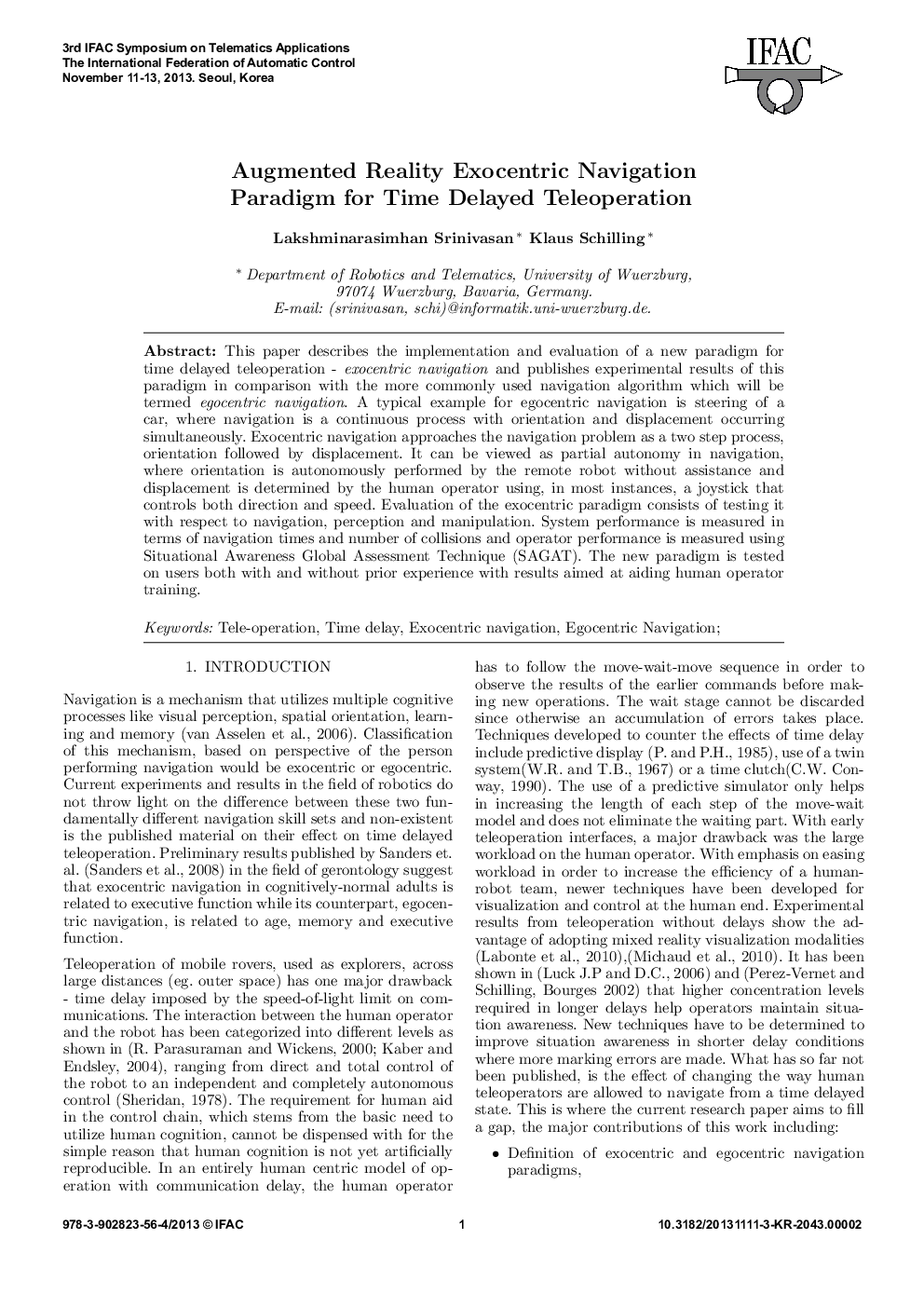| Article ID | Journal | Published Year | Pages | File Type |
|---|---|---|---|---|
| 714394 | IFAC Proceedings Volumes | 2013 | 6 Pages |
This paper describes the implementation and evaluation of a new paradigm for time delayed teleoperation - exocentric navigation and publishes experimental results of this paradigm in comparison with the more commonly used navigation algorithm which will be termed egocentric navigation. A typical example for egocentric navigation is steering of a car, where navigation is a continuous process with orientation and displacement occurring simultaneously. Exocentric navigation approaches the navigation problem as a two step process, orientation followed by displacement. It can be viewed as partial autonomy in navigation, where orientation is autonomously performed by the remote robot without assistance and displacement is determined by the human operator using, in most instances, a joystick that controls both direction and speed. Evaluation of the exocentric paradigm consists of testing it with respect to navigation, perception and manipulation. System performance is measured in terms of navigation times and number of collisions and operator performance is measured using Situational Awareness Global Assessment Technique (SAGAT). The new paradigm is tested on users both with and without prior experience with results aimed at aiding human operator training.
